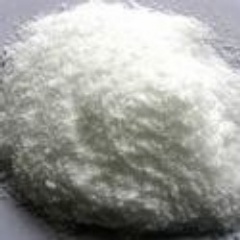Potassium Metabisulfite
| Infobox on Potassium Metabisulfite | |
|---|---|
| Example of Potassium Metabisulfite |  |
| Facts | |
| Origin | |
| Stowage factor (in m3/t) | |
| Humidity / moisture | |
| Ventilation | |
| Risk factors | |
Potassium Metabisulfite
Contents
Description
Potassium metabisulfite, K2S2O5, also known as potassium pyrosulfite, is a white crystalline powder with a pungent sulfur odour. The main use for the chemical is as an antioxidant or chemical sterilant. It is a disulfite and is chemically very similar to sodium metabisulfite, with which it is sometimes used interchangeably. Potassium metabisulfite is generally preferred out of the two as it does not contribute sodium to the diet. The product is soluble in water.
Application
It is used as an antiseptic, reagent, source of sulphurous acid, brewing (cleaning casks and vats), wine-making (said to kill only undesirable yeasts and bacteria), food preservative, developing agent (photography), process engraving and lithography, dyeing, antioxidant, bleaching agent.
Shipment / Storage / Risk factors
Shipped in bottle or drums. Used as an antiseptic, as a food preservative, a bleaching agent in photography and in the brewing and wine-making industries.
On exposure, becomes damp, tinged with yellow, and undergoes a chemical change. For example, instead of containing the customary 54% to 57%, sulphur trioxide the damaged portion on analysis may be found to contain only 20% to 22%.
| Appearance | White crystalline powder |
| Odour | Pungent (sulfur dioxide) |
| Density | 2.34 g/cm 3 (solid |
| Melting point | 190°C. decomp. |
| Solubility in water | 450 g/l (20°C) |
| Solubility | Insoluble in ethanol |
Note: For overseas carriage aspects of Chemicals, the readers are recommended to acquire or have access to a good chemical dictionary, and a copy of the International Maritime Dangerous Goods (IMDG) Code, issued by the International Maritime Organisation. Also consult the applicable MSDS sheet.











